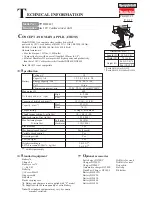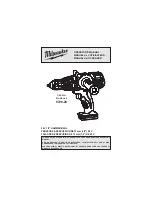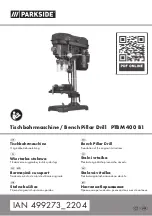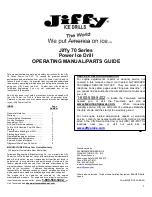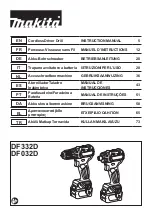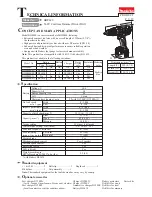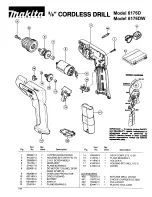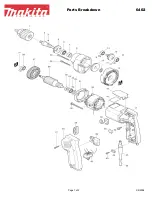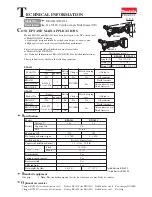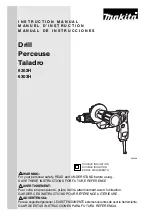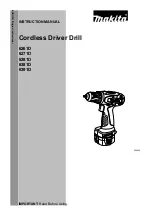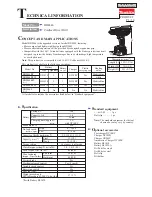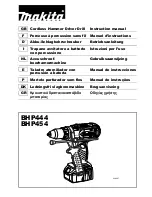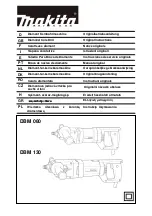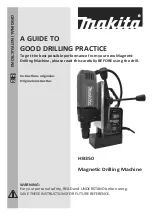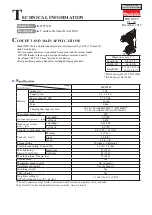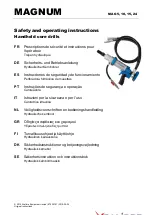
case of an increased noise level and/or vibration.
Never cool down a hot tool/accessory as this may influence the hardness causing dangerous circumstances.
Use the inserted/mounted accessory/tool according to the manufacturer specifications.
Using the tool:
Before start using the tool, make sure that you are familiar with the workplace and surrounding area.
Always obey the safety regulations for the work area you are working in.
Hold the tool always firmly with both hands.
Apply sufficient force, never supply too much force as this will slow down the efficiency. Maximum efficiency during operation: 80 % of
the free rpm.
Too much force may stop the tool.
During operating the tool, the operator may be exposed to hazards as crushing, impacts, heat, vibration, cuts, abrasions, etc: Wear
suitable gloves.
Any person handling the tool must be able to handle the size, weight and power of the tool.
Always be prepared for normal/abnormal movements/forces generated by the tool.
Keep your body in balance, place your feet safe and secure.
In case of interruption of the air supply, release the lever/trigger.
Take care of the reaction forces, if the tool (suddenly) stalls.
When using a power tool, you may experience discomfort in your hands, arms, shoulders, neck and other parts of your body.
If you experience symptoms such as persistent or recurring discomfort, pain, throbbing, aching, tingling, numbness, burning sensation,
or stiffness: Do not ignore these warning signs. Stop using the tool, tell your employer and consult a qualified health professional.
Check if the direction of rotation is in the required direction.
Pull the trigger to start the tool and release the trigger to stop the tool.
Push the lever to start the tool and release the lever to stop the tool.
Mount the drill bit firmly in the drill chuck.
Place the drill tip on the marking of the workpiece, preferable a center point in the workpiece to prevent the drill bit to slide away from
the position.
Be prepared of possible reaction forces when the drill bit gets blocked.
Operator should change posture regularly to avoid discomfort and fatigue.
Use hear protection according to employer, health and safety regulations.
Maintenance:
Check the tool regularly for loose bolts/screws or parts.
Measure the rpm of the tool regularly, in case of higher or lower rpm than indicated in the technical specifications: Stop using the tool
immediate and have it repaired.
In case of power loss: Have the tool repaired.
Only trained and qualified engineers are allowed to adjust or repair the tool.
In case the tool is equipped with a silencer, make sure that this silencer is working properly, a damaged silencer has to be replaced.
In case of disposal of the tool, follow local regulations, so as much as possible can be recycled. Do not throw it in the normal waste bin.
The tool should be maintained regularly to minimize the noise emission and occurring vibration.
Disconnect the air supply during maintenance on the tool.
Maintain the tool at least yearly.
Intended use:
The user or the user's employer shall assess the specific use that can be present as a result of each use.
Never use the tool otherwise than the tool is designed for and as explained in this manual.
Damages as a consequence of not following this manual, or caused by incorrect use or incorrect repairs, will never be covered by our
warranty and we will have no responsibility for it. We reserve the right for technical improvements, without prior notification.
This tool is designed for drilling in various materials using the available on the market, appropriate drill bits designed for these
applications. If used otherwise, like for example as mixer using special accessories a risk assessment has to be made by the
employer/user.
Summary of Contents for YRD-6NBK
Page 1: ... YRD 6NBK MANUAL EN www rami yokota com ...
Page 2: ......
Page 7: ... www rami yokota com ...








